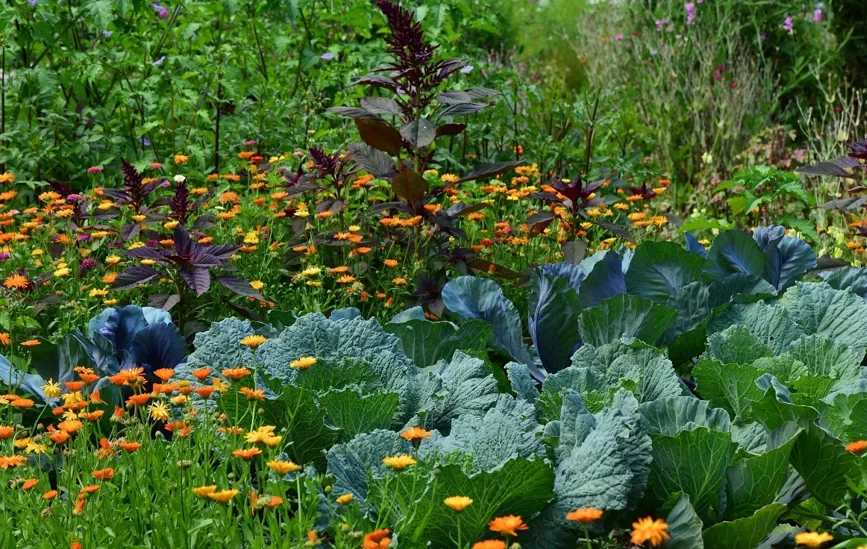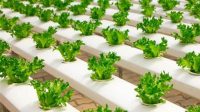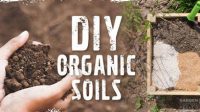goads.id – Picture this: sun-drenched rows of plump veggies, butterflies flitting between fragrant blooms, and the earthy aroma of soil teeming with life. This isn’t just a dreamy Instagram aesthetic; it’s the reality of a sustainable garden, a vibrant ecosystem nestled in your own backyard. Forget chemical-laden monocultures and embrace a holistic approach that nurtures not just your plants but the planet, too. Ready to swap your trowel for a sustainability superhero cape? Let’s delve into the practical magic of eco-friendly gardening!
Ditch the Chemicals, Embrace the Earthworms: Unconventional Heroes of Sustainable Gardens
Think you need harsh chemicals to keep pests at bay and weeds in check? Think again! Sustainable gardens rely on the power of nature’s allies. Ladybugs munch on aphids, spiders deter unwelcome insects, and earthworms aerate the soil, creating a thriving underground city. Attract these beneficial critters by planting diverse flowers, providing water sources, and avoiding chemical pesticides that harm both good bugs and bad.
Water Wisely: Every Drop Counts in Your Backyard Oasis
Water, that life-giving elixir, is precious, especially in these changing times. Ditch the wasteful sprinkler and embrace water-saving strategies. Mulch generously to retain moisture, harvest rainwater in barrels, and water deeply less frequently for healthier root systems. Opt for drought-tolerant native plants that thrive on minimal hydration, transforming your garden into a low-maintenance paradise.
Feed the Soil, Not Just the Plants: Compost, the Magic Elixir of Sustainability
Healthy soil is the foundation of any thriving garden, and compost is its golden fertilizer. Instead of sending food scraps and yard waste to landfills, transform them into nutrient-rich gold. Start a compost bin or pile, layering kitchen scraps, leaves, and yard trimmings in a symphony of decomposition. This black magic will rejuvenate your soil, improve drainage, and reduce your reliance on store-bought fertilizers.
Table: Common Kitchen Scraps for Your Compost Pile
| Food Scraps | Great for | Not-So-Great for |
|---|---|---|
| Fruit and vegetable peels | Nitrogen, potassium, and micronutrients | Meat, dairy, and oily foods |
| Coffee grounds and tea leaves | Nitrogen and acidity | Citrus peels in large quantities |
| Eggshells | Calcium | Whole eggs |
| Bread and grains | Carbon and energy | Large amounts of moldy bread |
Grow with the Seasons: Nature’s Calendar for Abundant Harvests
Forget fighting against natural rhythms. Plant according to your local climate, embracing the bounty each season offers. Spring welcomes cool-weather greens like lettuce and spinach, while summer explodes with heat-loving tomatoes, peppers, and squash. Autumn brings the cozy comfort of root vegetables and leafy greens, and winter offers a chance to rest and plan for the next verdant cycle.
Beyond the Veggie Patch: Sustainable Landscaping for Eco-Friendly Yards
It’s not just about veggies! Sustainable landscaping extends your eco-conscious ethos throughout your entire yard. Reduce your lawn footprint by planting low-maintenance native groundcovers or creating pollinator-friendly meadows. Replace thirsty ornamental trees with drought-tolerant varieties, and embrace natural rock formations instead of rigid landscaping structures. Let nature be your architect, creating a beautiful and biodiverse haven.
Get Your Hands Dirty: The Joy of DIY and Upcycling in the Garden
Sustainability isn’t just about fancy eco-gadgets; it’s about embracing resourcefulness and creativity. Repurpose old containers for planters, build raised beds from salvaged wood, and turn discarded bottles into watering cans. Get your hands dirty, embrace DIY projects, and let your garden become a canvas for your ingenuity.
Share the Seedling Love: Building a Community Around Sustainability
Sustainable gardening isn’t just a solo adventure; it’s a chance to connect with your community. Organize seed swaps, share gardening tips with neighbors, and create a local network of eco-conscious green thumbs. Together, you can inspire each other, tackle larger projects, and build a greener, more vibrant neighborhood.
Remember, dear gardener, you’re not just cultivating plants; you’re cultivating a relationship with the Earth. Embrace the messy magic of sustainable practices, and witness your backyard blossom into a thriving ecosystem, bursting with life and buzzing with possibility. So, grab your gloves, roll up your sleeves, and step into your very own Eden. The sun-soaked soil awaits, ready to reward your green-fingered love with a cornucopia of nature’s bounty.
This is just a starting point, a map to guide your sustainable gardening journey. Remember, every patch of green, every upcycled pot, every shared seed swap contributes to a healthier planet. So, go forth, embrace the dirt, and cultivate a piece of Eden
- Delve deeper into specific practices: Would you like me to provide detailed instructions on composting, rainwater harvesting, or building raised beds?
- Explore specific challenges and solutions: Are there any particular gardening hurdles you’d like to tackle, like dealing with pests without chemicals or attracting pollinators?
- Focus on regional aspects: Can I tailor the article to your specific climate and available resources? We could explore drought-resistant gardening in arid regions or discuss native plants suitable for your area.
- Provide additional resources: Would you like me to include links to helpful websites, organizations, or books about sustainable gardening?
Let me know your preference, and I’ll craft a continuation that enriches your gardening journey and sparks your eco-friendly spirit!







